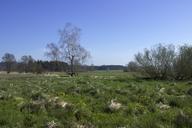Introduction
Photography is an art form that transcends mere image capture; it embodies a duality of elements that can evoke emotion, tell stories, and capture the essence of fleeting moments. Among these elements lies the fascinating interplay of soft and sharp contrasts. In this comprehensive exploration titled "Soft and Sharp Contrasts in Photography: A Study in Balance," we will delve into how this balance shapes aesthetic photography and creates visual poetry. This study encompasses various styles, including fine art photography, moody photography, ethereal photography, and beyond.
Photography isn’t just about capturing what you see; it's about expressing a feeling or a narrative through visual means. This article aims to uncover the layers behind soft and sharp contrasts, exploring their significance across different photography styles like black-and-white photography, landscape photography, and serene nature photos. So grab your camera and let’s embark on this journey through light, shadow, texture, and emotion!
Soft and Sharp Contrasts in Photography: A Study in Balance
Understanding Photographic Contrast
The term "contrast" refers to the difference between two or more elements within a composition. In photography, contrast can manifest through various dimensions—light vs. dark, smooth vs. rough textures, vibrant colors vs. muted palettes. But what do soft and sharp contrasts specifically entail?
- Soft Contrasts: These are gentle transitions between tones or colors that create a soothing effect in an image. Sharp Contrasts: These involve abrupt differences that can produce dramatic tension or highlight particular subjects within a photo.
Whether you're engaging in contemplative photography or shooting ethereal landscapes at sunrise, understanding how to balance these contrasts is crucial for creating impactful images.
The Role of Light in Contrast
Light serves as the backbone of photographic contrast. Different lighting conditions can significantly affect how soft or sharp your contrast appears.
Natural Light vs. Artificial Light
- Natural Light: Often regarded as the best source due to its ability to create soft shadows during golden hour or harsh edges at noon. Artificial Light: Can be manipulated easily to create both sharp highlights and soft fills.
Exploring the relationship between light quality and contrast can lead to breathtaking results in various photographic styles like backlit portraits or long exposure photography.
The Influence of Color Theory on Contrast
Color theory plays an essential role in understanding how contrasts impact emotional responses:
Warm Colors: Generally evoke energy but can appear harsh when not balanced with cooler tones. Cool Colors: Tend to be calming but may lack vibrancy without warm accents.Utilizing color effectively allows photographers to achieve striking contrasts while maintaining aesthetic harmony—essential for any artistic photography project.
Techniques for Softening Hard Edges
Creating soft contrasts often involves techniques that reduce harsh lines or lighting:
- Diffusion Filters: Soften sharp shadows without losing detail. Post-processing Tools: Programs like Adobe Lightroom allow for selective adjustments.
These tools enable photographers to present dreamlike imagery while ensuring that no detail is lost—a critical aspect for fine art photography enthusiasts.
Exploring Various Photography Styles with Soft and Sharp Contrasts
Fine Art Photography: An Emotional Journey
Fine art photography thrives on aesthetics; the balance between soft and sharp elements contributes significantly to visual storytelling.
The Use of Textures
In fine art photography:
- Textures can add depth; juxtaposing rough surfaces against smooth backgrounds enhances visual interest. Combining these attributes generates a tactile quality, inviting viewers into your artistic vision.
For example, capturing a frozen lake surrounded by rugged mountains showcases the tension between softness (the lake) and sharpness (the jagged peaks).
Moody Photography: Capturing Emotion Through Contrast
Moody photography often relies on deep shadows interspersed with bright highlights:
Dark Tones: Set an emotional tone that engages viewers. Bright Spots: Act as focal points amidst darkness.Employing this technique effectively creates intense narratives—perfect for those who wish to convey feelings rather than just visuals.
Ethereal Photography: Creating Dreamlike Imagery
Ethereal photographs often rely heavily on softness:

- Utilizing bokeh effects brings dreamy elements into focus while blurring distractions. Subjects shot against softly lit backdrops lend themselves well to serene compositions.
This approach captures fleeting moments beautifully—ideal for nature-inspired projects where tranquility reigns supreme.
Composition Techniques Using Soft and Sharp Contrasts
The Rule of Thirds: Balancing Elements
One fundamental composition technique involves dividing your frame into thirds—both horizontally https://telegra.ph/Capturing-Timeless-Moments-with-a-Self-Timer-11-09 and vertically:
Place focal points at intersections. Incorporate contrasting elements within those sections for heightened interest.This method encourages viewers’ eyes to dance across your photograph rather than getting stuck on one element—a vital aspect when balancing soft features against sharper details.
Leading Lines: Directing Attention
Leading lines guide viewers toward points of interest while exploiting contrast effectively:
- Straight lines provide structure; they often appear bold against softer backgrounds. Curved lines introduce fluidity; they work well when paired with gentle hues or textures.
Using leading lines creatively helps maintain viewer engagement throughout your image's narrative arc—a key component in timeless photography practices!
Depth of Field: Playing with Focus
Depth of field manipulates focus levels within an image:
- Shallow depth creates dreamy backdrops while emphasizing sharper subjects. Greater depth encompasses entire scenes but may dilute focal emphasis unless carefully managed.
Understanding these dynamics allows photographers greater control over their desired aesthetic—crucial for achieving poetic outcomes!
Practical Tips for Achieving Balance
Experimentation is Key
Finding balance between soft and sharp contrasts often requires trial-and-error experimentation:
Try different exposures under various lighting conditions. Adjust settings like aperture size consciously based on desired effects (soft vs hard).This willingness opens up new avenues for creativity—even if you find yourself stepping outside conventional boundaries!
Post-processing Techniques
Post-processing remains fundamental after capture—as it offers tools necessary for refining balance:
Use curves adjustments selectively enhance highlights/shadows dynamically. Explore layer blending modes while keeping original integrity intact!These methods help maintain authenticity—vital when striving towards digital fine art photos infused with character!
The Psychological Impact of Contrast
Evoking Emotions Through Visual Language
Contrast has psychological implications rooted deeply within human perception:
High contrast images provoke strong reactions (excitement/fear). Low contrast imagery elicits calmness/serenity instead (peaceful introspection).Understanding these nuances empowers photographers to tailor their work more intentionally according to audience response expectations!
Cultural Interpretations
Different cultures interpret visual cues uniquely based on societal context:
- Brightly colored high contrasts might symbolize celebration/prosperity elsewhere; subdued tones could indicate mourning/reflection elsewhere entirely!
Being mindful about cultural contexts enriches storytelling capabilities across borders—isn't it fascinating?
FAQs About Soft and Sharp Contrasts in Photography
Q1: What are some common examples of soft contrasts?
A1: Common examples include pastel colors fading into one another or gentle gradients found during sunset skies – perfect subjects for ethereal photography projects!
Q2: How do I achieve sharper contrasts?
A2: You can achieve sharper contrasts by using direct lighting sources such as flash units aimed directly at subjects while deliberately choosing darker backgrounds!
Q3: What role does editing play in enhancing contrast?
A3: Editing plays a pivotal role—it allows you fine-tune brightness/contrast levels digitally beyond what was captured initially!

Q4: Why is balance important?
A4: Balance ensures harmonious compositions without overwhelming viewers visually—it guides them smoothly around each element engagingly!
Q5: Can I mix both styles together?
A5: Absolutely! Many photographers successfully blend both approaches resulting captivating results that reflect personal style preferences authentically!
Q6: Are there specific lenses recommended?
A6: Lenses vary widely based individual preferences; however prime lenses tend produce sharper images compared zoom counterparts – ideal choices if seeking defined edges!

Conclusion
In conclusion, mastering the interplay between soft and sharp contrasts is vital for any photographer seeking to elevate their work from simple snapshots into captivating visual poetry. Whether you're engaged in landscape photography capturing sunrises or experimenting with moody black-and-white shots, understanding this dynamic will enhance not only your technical skills but also your creative expression as an artist.
By integrating techniques discussed throughout this article—from compositional strategies like the rule-of-thirds to post-processing methods—you’ll unlock new dimensions within your artistry! As you continue exploring these concepts further remember one thing above all else—the beauty lies equally within both softness AND hardness – strive always find YOUR unique balance along way!
So go ahead… grab that camera once more—and remember—the world awaits YOUR interpretation through lens' magic!